The three best UV lights for gemstone testing are the Tank007 K9A5 (ideal for beginners), Alonefire SV84 (powerful output for detailed inspections), and Streamlight 51018 (professional-grade performance). For best fluorescence results, choose flashlights operating in the 365-395nm UV-A range and hold them 2-5 inches from your specimen in a darkened environment. The right UV light will reveal hidden characteristics and help you authenticate gemstones with confidence. Discover what your collection has been hiding.
3 Best UV Lights For Gemstone Testing
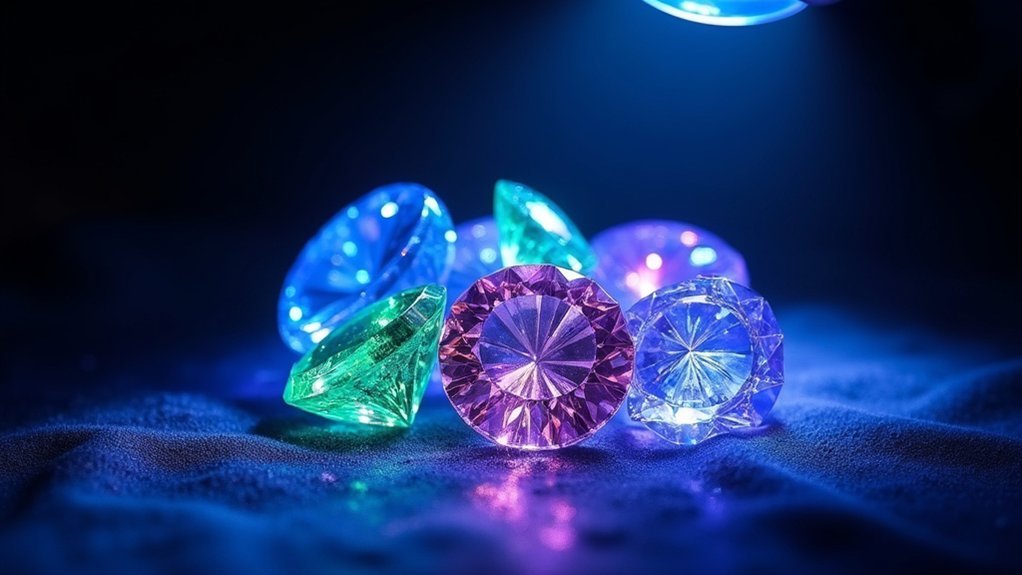
When selecting a UV light for gemstone testing, you’ll want to focus on models that emit wavelengths between 365 nm and 395 nm (UV-A range), as these frequencies cause minerals to fluoresce most effectively.
This fluorescence reveals hidden characteristics essential for accurate gemstone identification.
For beginners, the Tank007 K9A5 offers reliable performance at an accessible price point.
If you’re looking for professional use options, consider investing in the Streamlight 51018 or Nitecore NU05, which provide more intense LED illumination and consistent results.
For best results, hold your UV flashlight 2-5 inches from the specimen and work in a dimly lit environment.
This technique maximizes fluorescence visibility, helping you identify inclusions and verify authenticity.
The best UV flashlights will consistently reveal color changes that indicate whether a gemstone is genuine or has undergone treatment.
UV Light Wavelengths: What Matters For Gemstone Fluorescence
Understanding specific wavelengths proves fundamental to successful gemstone testing with UV light. For ideal gemstone identification, you’ll want to focus on the 365-395 nm range (UV-A), which reveals fluorescence in various gems without risking damage.
While UV-C lights (254 nm) produce more intense reactions, they require careful handling due to potential harm. To maximize visibility of hidden characteristics that aren’t apparent under visible light, position your UV flashlight 2-5 inches from the specimen in a darkened environment.
The consistent fluorescence pattern across a gemstone often indicates natural formation, while irregular patterns may suggest treatments.
Different stones emit distinctive colors when excited by UV radiation, making your UV flashlight an essential tool for authenticating specimens and discovering their unique fluorescent properties.
Top-Performing UV Flashlights Based On Comprehensive Testing
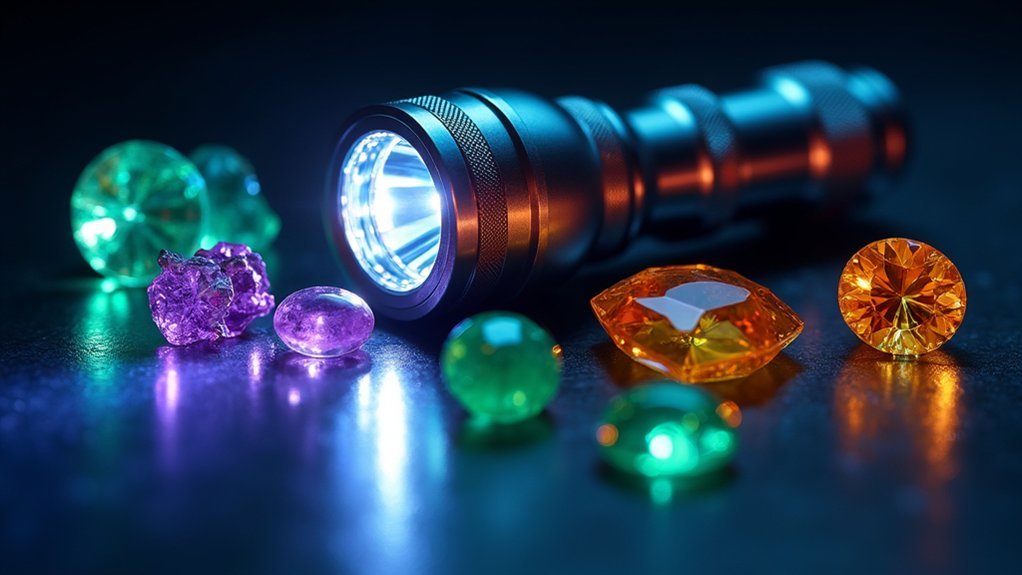
Five standout UV flashlights have emerged from our rigorous testing as exceptional tools for gemstone identification. The Alonefire SV84 leads with the most powerful output, making it ideal for detailed gemstone inspection when you need maximum fluorescence.
After extensive testing, the Alonefire SV84 delivers unmatched power for revealing the hidden fluorescent secrets within your gemstone collection.
For examining stones from a distance, choose the Alonefire SV83 with its superior beam focus. You’ll get better results with flashlights operating at 365 nm wavelength, which reveal hidden characteristics more effectively than 385 nm models.
The Alonefire SV43’s dimmable UV LED technology offers versatility for both close and distant work.
If you’re new to gemstone testing, the Tank007 K9A5 provides sufficient UV-A output without overwhelming power.
All top performers feature rechargeable Li-ion batteries, ensuring your flashlights to reveal fluorescent properties remain ready whenever needed.
Frequently Asked Questions
What Kind of Light Is Used to Check Gemstones?
You’ll use ultraviolet (UV) light to check gemstones, especially longwave UV (315-400nm) or UV-A flashlights at 365nm. These lights make gems fluoresce, revealing their unique characteristics while being safer than shortwave UV.
Is 365NM or 395NM Better?
For gemstone testing, you’ll want the 365nm wavelength. It’s considerably better than 395nm as it produces stronger fluorescence and reveals hidden characteristics in gems that you’d otherwise miss with the longer wavelength.
What UV Light Is Best for Finding Yooperlite?
For finding Yooperlite, you’ll need a 365nm UV flashlight with at least 5W output. Look for portable models with proper filtering. You’ll get the best results hunting in dimly lit environments.
What Is the Best Black Light for Art Inspection?
For art inspection, you’ll want a black light emitting UV-A light at 365-395nm wavelengths. The Alonefire SV84 offers powerful illumination with adjustable brightness settings, helping you detect paint anomalies and verify authenticity in dimly lit environments.
In Summary
When selecting a UV light for your gemstone testing, you’ll want to prioritize proper wavelength, intensity, and portability. The three models we’ve reviewed offer excellent performance at different price points. Remember that longwave UV (365nm) reveals the most fluorescence in gemstones. Don’t forget to wear protective eyewear during testing and avoid direct skin exposure to UV radiation.

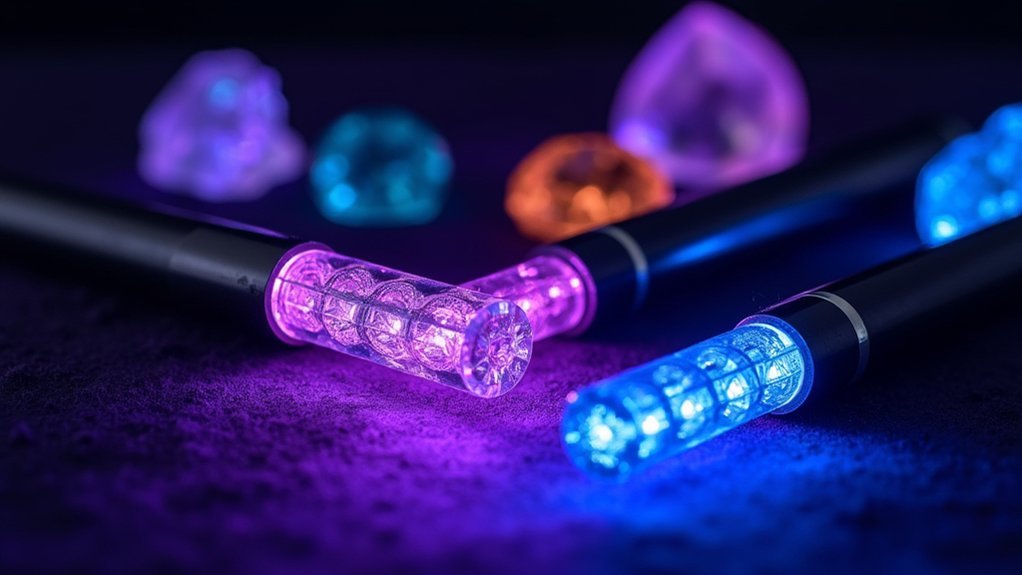
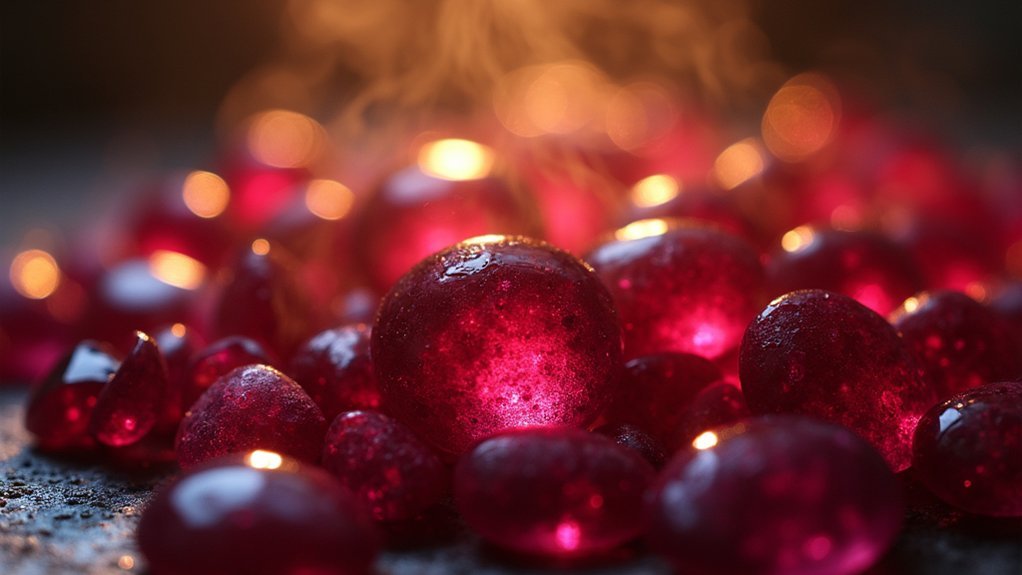
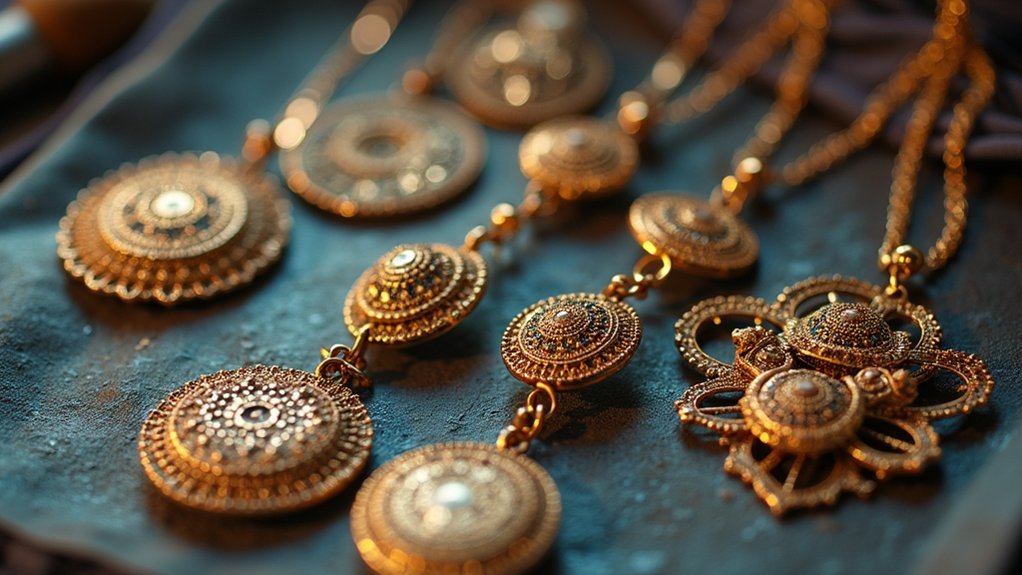
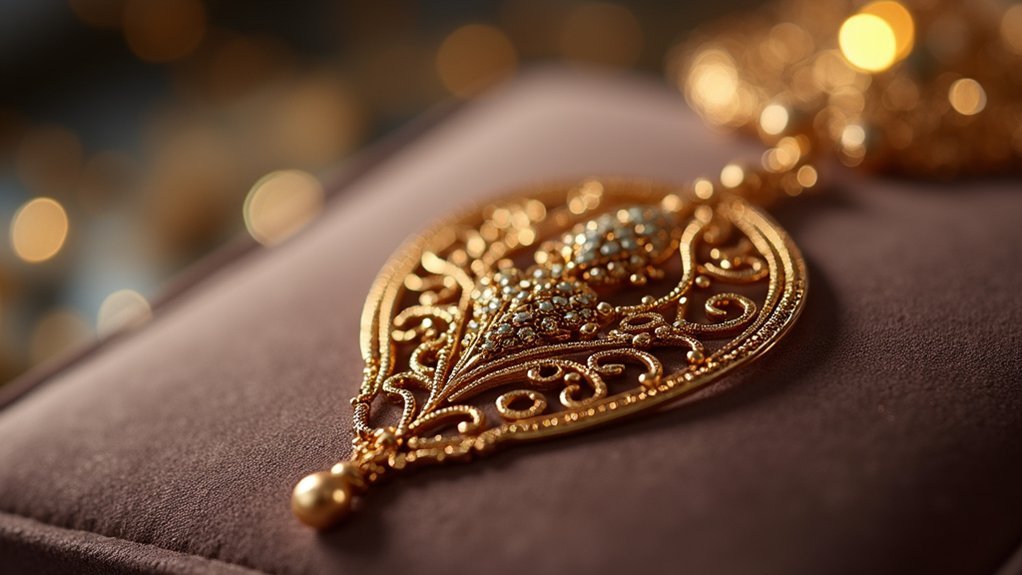
Leave a Reply